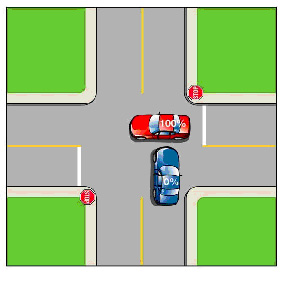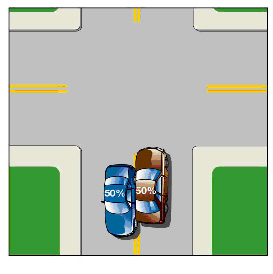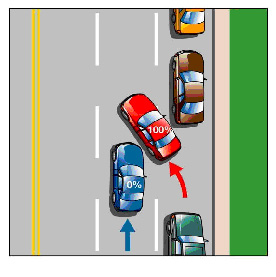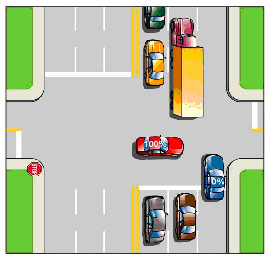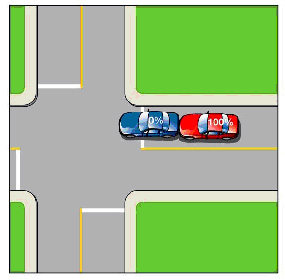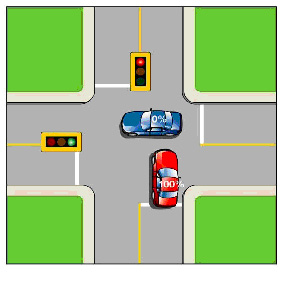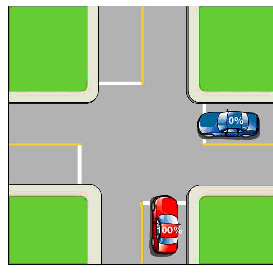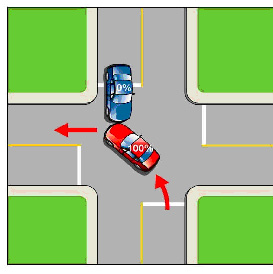
左转同对面车发生事故
Crash example: A vehicle turns left across the path of oncoming traffic at an intersection. (Motor Vehicle Act, Sections 165, 174)
A court will generally rule that the left-turning vehicle is 100 per cent at fault. If the left-turning vehicle starts its turn after the traffic light has turned yellow, fault may be split. (Motor Vehicle Act, Section 128)
A vehicle should not start its turn if the traffic approaching from the opposite direction is so close as to be an immediate hazard. However, if the vehicle has started turning legally, through-traffic must yield to the turning vehicle. (This situation often arises when a left-turning vehicle gets caught in the intersection before it is able to complete its turn.)
In some cases involving left turns, the courts may decide that the through vehicle is partly at fault. This may happen when vehicles in two lanes have stopped to let an oncoming vehicle turn in front of them, then another vehicle in the curb lane proceeds into the intersection without slowing down or otherwise paying attention to the turning vehicle. Speeding and/or generally not paying attention may also result in the through vehicle being partly at fault.
中文翻译:
